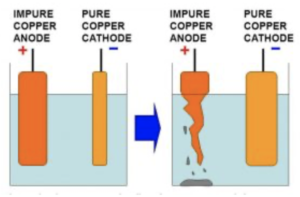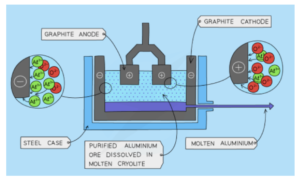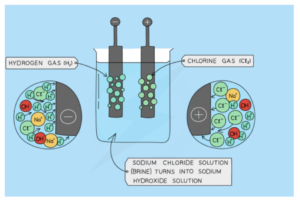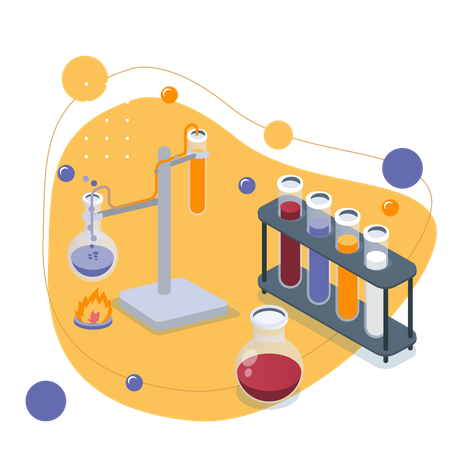Extraction of Metals (GCSE Chemistry)
Extraction of Metals
Extraction of Metals from their Ores
- Metals are found in the earth as ores. In the earth, metals are not found as ‘pure metals’. Instead, they are found as metal ores, which are oxidised metals. Unreactive metals are found in the earth’s crust as uncombined metals.
- Metals must be extracted from their ores. In order to use metals, we must extract them from their ores. We can do this via a reduction reaction, so we can remove the oxygen from the metal ore.
Metal Extraction Processes
Carbon Reduction Reactions
- We use carbon to extract metals. We can use carbon reduction reactions to reduce metal ores. In these reactions, the metal ores will be reduced and the carbon will be oxidised.
- Carbon reduction reactions form two products. During a carbon reduction reaction, the metal ore loses oxygen whilst the carbon gains oxygen, forming carbon dioxide. For the metal ore to be extracted using carbon it needs to be less reactive than carbon in the reactivity series.
- Carbon displaces less reactive metals. As we learnt earlier, metals will always displace those that are less reactive than themselves. This means that carbon can only be used for the metals that are less reactive, such as Zinc, Iron and Copper.
- Carbon can displace iron. When we react iron (III) oxide with carbon, the carbon will displace the iron. This is shown in the following equation.
E.g. 2Fe2O3 + 3C → 4Fe + 3CO2
Iron (III) oxide + carbon → iron + carbon dioxide
Electrolysis
- Electrolysis is another extraction method. If a metal is above carbon in the reactivity series, we need to look for an alternative extraction method. Electrolysis is a good alternative to a carbon reduction reaction, but it can be quite expensive.
- Unreactive metals are often pure. Many unreactive metals (such as gold) are found in their pure form in the earth. These pure metals do not need to be extracted from an ore; we can simply remove them from the ground in their pure form.
Purifying Copper
We can purify a solution containing copper, such as copper (II) sulphate, using electrolysis. This involves an impure copper anode and a pure copper cathode.
At the anode, copper atoms lose electrons and go into the solution as ions. Therefore the anode decreases in size and the impurities fall to the bottom of the cell.
At the cathode, these electrons are then gained to form purified copper atoms. Therefore the cathode increases in size.

Extraction of Aluminium
1. Aluminium ore is obtained from the Earth’s crust. This aluminium ore is also known as Bauxite.
2. Aluminium oxide is produced. Bauxite must be purified to form aluminium oxide.
3. Aluminium oxide is dissolved in molten cryolite at 1000°C. A solution of aluminium oxide in molten cryolite is produced, which has a lower boiling point and higher electrical conductivity.
4. Molten aluminium is drained away and new aluminium oxide is provided. This process is repeated, occurring at 5-6 volts and 100,000 amps.
5. Aluminium is formed at the negative electrode. The aluminium ions gain electrons to form aluminium, which melts and is collected from the bottom of the cell.
Al3+ + 3e– → Al
6. Oxygen is formed at the positive electrode. The oxygen produced can react with carbon to form carbon dioxide.
2O2- – 4e– → O2
C (s) + O2 (g) → CO2 (g)

Manufacturing Chlorine, Hydrogen and Sodium Hydroxide
The process of electrolysis can also be used to produce chlorine, hydrogen and sodium hydroxide. This is done using a concentrated solution of aqueous sodium chloride (containing H+, Cl– and OH–), known as brine.

At the cathode, hydrogen gas is produced and at the anode, chlorine gas is produced. Sodium and hydroxide ions then form the remaining sodium hydroxide solution.
Extraction of metals is the process of separating metals from their ores in order to obtain pure metal for use in various applications.
The extraction of metals is important because it allows us to obtain pure metal for use in a wide range of applications, including electronics, construction, transportation, and medical equipment.
Metals are extracted from their ores through a variety of methods, including roasting, smelting, and electrolysis. The specific method used depends on the type of ore and the metal being extracted.
Roasting is a method used in the extraction of metals that involves heating the ore to high temperatures in order to remove impurities and produce a metal oxide.
Smelting is a method used in the extraction of metals that involves heating the metal oxide produced from roasting with a reducing agent, such as carbon, to obtain pure metal.
Electrolysis is a method used in the extraction of metals that involves using electricity to separate the metal ions in a solution and deposit them as a pure metal on the cathode.
The method of extraction is different for different metals because each metal has its own unique chemical and physical properties that determine the most effective method of extraction. For example, some metals are more easily extracted through roasting and smelting, while others require more complex methods, such as electrolysis.
The extraction of metals can have a significant impact on the environment, including soil and water pollution, air pollution, and the destruction of natural habitats. It is important to carefully manage and minimize these impacts through responsible mining practices and the use of new technologies.






Still got a question? Leave a comment
Leave a comment